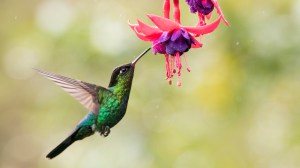How Many Frog Species Are in the World?
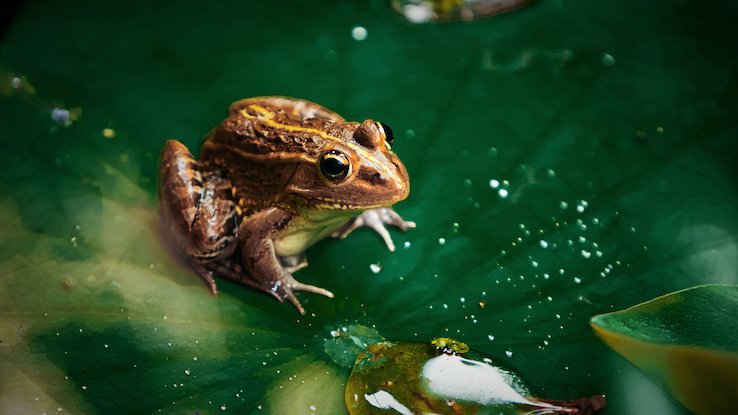
Frogs are fascinating little creatures who are full of surprises. Get ready to check out a collection of fun frog facts as we get to know one of the world’s most popular amphibians. Learn everything from how many species of frogs roam the planet to the difference between frogs and toads. Let’s launch into some amazing frog facts and trivia.
Fun Frog Terminology
Have you ever wondered what to call a large group of frogs? While frogs may not be the most militant creatures, a large group of adult frogs is referred to as an army. Science has developed humorous names for other frog groupings, as well.
A group of frogs who are all the same age is a cohort, while a gathering of frogs of different ages is called a band. If a group of male frogs gets together and “sing” or croak together, they are called a chorus. Should the frogs all be toads, they’re collectively known as a “knot.”
What’s the Difference Between Frogs and Toads?
The difference between frogs and toads can be tricky to nail down, as there is no scientific distinction between the two. Toads are actually a type of frog, meaning that all toads are frogs. However, not every frog is a toad. Have we confused you yet? Think of it like money. A dollar bill is a kind of money, but not every type of money is a dollar bill.
Physical characteristics can go a long way in helping to spot a toad. Toads tend to have shorter hind legs, less bulgy eyes and bumpier skin than some of their other frog cousins. Toads also tend to spend more time on land than other water-loving frogs.
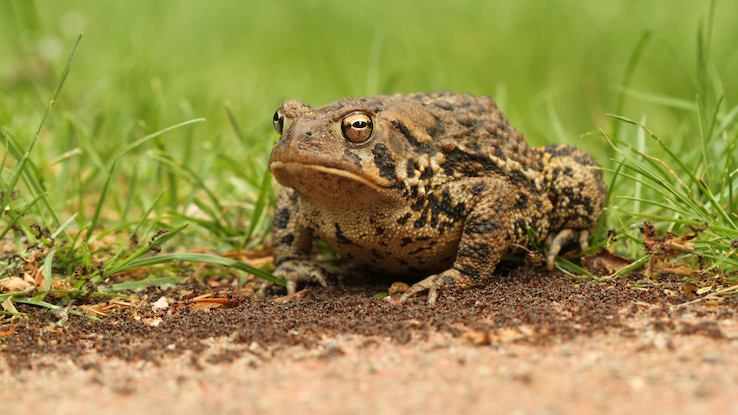
Last but not least, while not all frogs are poisonous, all toads are. Luckily, toad toxins tend to have a pretty mild effect on humans. However, they can cause allergic reactions if you don’t wash your hands well after handling one.
There Are Thousands of Different Frog Species
Science has already identified over 5,000 different species of frogs from every continent in the world except for Antarctica. The largest frog species discovered so far is the Goliath frog. It can grow over 13 inches long without its hind legs extended. These big guys can weigh up to 7 pounds, roughly as large as a small house cat.
The world’s smallest known frog was recently discovered in Madagascar. It is known as the Mini mum and measures around 8 to 10 millimeters, which is about the size of a staple. These insect-sized amphibians can comfortably fit on an adult human fingernail with room to spare.
How Many Frog Species Are Poisonous?
While most frogs are harmless, there are around 180 species of poisonous frogs. Most of them live in the Central and South American tropical forests. The good news is that poisonous frogs make no secret of their deadly abilities. They all sport bright, often beautiful, colors.
Scientists believe these highly toxic frogs developed flashy colors as a warning to potential predators. Over the years, other animals have learned that consuming one does not end well, so they tend to be left alone.
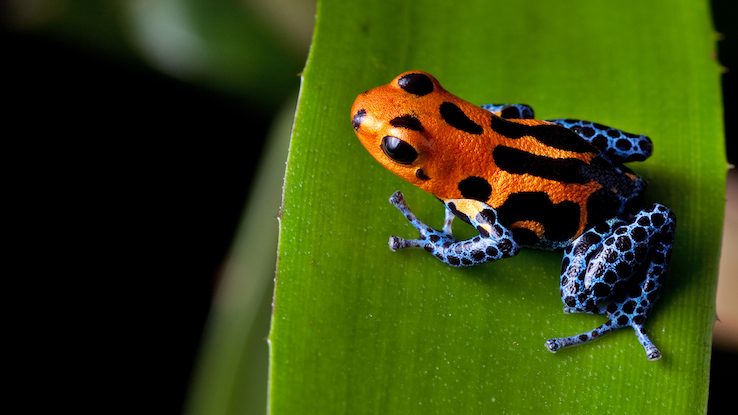
There are even two rare species of Brazilian frogs that are not only poisonous but also venomous. They are Bruno’s casque-headed frog (Aparasphenodon brunoi) and Greening’s frog (Corythomantis greening). Both sport bony protrusions that allow them to inject venom into their foes.
Frogs Are Tiny-Toothed Carnivores
Though it may seem funny to group frogs in the same category as lions, they are classified as carnivores. Frogs in the wild survive on insects like crickets, flies, beetles, worms, slugs, spiders and more. Frogs aren’t picky about their diets, though. Many larger species will eat whatever fits in their mouths.
Pacman frogs, for instance, will use their camouflage coloring to lie in wait until an unsuspecting meal walks past. They’ll readily make meals of everything from ants and mice to snakes and other frogs.
To the surprise of many, frogs do have teeth, but they’re so small that it’s hard to spot them. Most are less than a millimeter long. If you’re curious to see what frog teeth look like, check out this study by the Florida Museum of Natural History.
Frogs Eat With Their Eyes
Those big, bulging eyes provide frogs with their keen eyesight and 180-degree vision. But they also have another surprising purpose. Every time frogs swallow, their eyes sink back into their heads to help push their food down so that they can swallow.
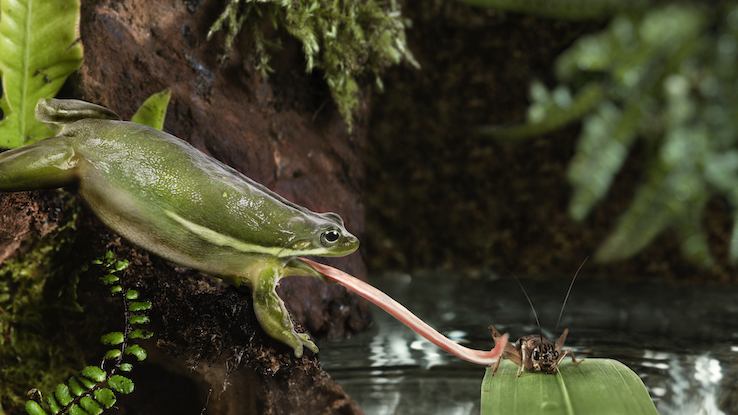
When it comes to water, frogs also have a very different system in play than humans. They don’t drink water through their mouths. Instead, they have a special “drinking patch” under their thighs. It absorbs water directly through their skin.
Pet Frogs Aren’t the Cuddling Type
While frogs may seem like low-maintenance pets, a little research will reveal that isn’t exactly the case. From housing and feeding to proper care and health maintenance, frogs are actually a lot of work. And unlike other pets, such as dogs and cats, they aren’t likely to show their appreciation in the cuddliest of ways.
As Kristin Claricoates, DVM at Chicago Exotics Animal Hospital, explains, “Frogs are pets to be appreciated from a distance, and not to be cuddled, pet, or handled frequently.”
They’re not likely to curl up in your lap, but you probably don’t want them to. Some species secrete toxins. These toxins can irritate their owner’s skin when they make direct contact. And frogs have very sensitive skin that can be easily irritated by anyone handling them without gloves.
If you intend to adopt a frog of your own, be sure to do your research. Find out the correct type of habitat, diet and other considerations to keep your pet frog happy and healthy.


